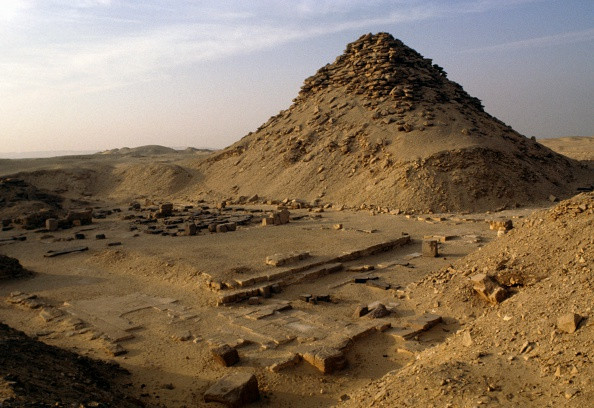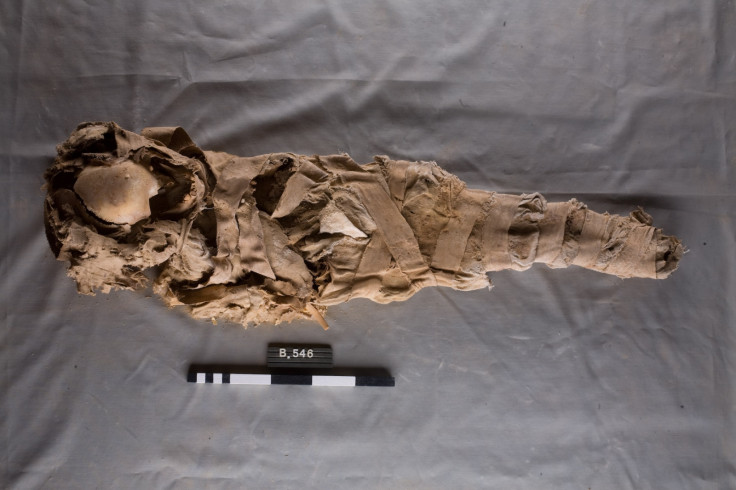Graves of ancient Egypt's last children reveal widespread malnutrition
Twenty-nine bodies of children were analysed for signs of disease in the ancient necropolis of Saqqara.
Children buried in the Ancient Egypt necropolis of Saqqara 2,000 years ago may have suffered from anaemia, tooth decay and chronic sinusitis, archaeologists have discovered.
Saqqara is a vast burial ground which was used throughout antiquity, as the necropolis for Memphis, the ancient Egyptian capital. Inhumations dating back to the late Old Kingdom Period (5th and 6th Dynasties, 2750 – 2181 BCE) and Ptolemaic and early Roman Period (332 BCE – 1st century CE) have been identified there. The later graves coincided with the end of the ancient Egyptian civilisation.
At its beginnings, the site was mostly used to offer the city's elite impressive burials – and indeed rich and elaborate rock tombs dating to the Old Kingdom have been found in the past. However, it was later extended to bury people from more modest backgrounds, among them young children.
Dr Iwona Kozieradzka-Ogunmakin, from the University of Manchester joined the Polish-Egyptian Archaeological Mission working in a small area of the site in 2006, to study human remains, both mummified and skeletonised.
Archaeological research at the necropolis focuses on investigating life and death in the region during two time periods (Old Kingdom and Ptolemaic-Early Roman Period). Kozieradzka-Ogunmakin's work was to conduct in-depth analysis of human remains to study the link between social status and physical health of the population at Saqqara, and more recently, the effect of the environment on human health.
"Given the close dependence of ancient Egyptian agricultural systems on the River Nile, environmental fluctuations may have had adverse impact on population health in the ancient Nile Valley", she told IBTimes UK.

"My study was based on a small assemblage of 29 individuals aged 12 years or under at the time of death that were recovered from a Ptolemaic cemetery at Saqqara. Although the assemblage is rather small, it presents an important contribution to the body of research on the Ptolemaic-date populations from Egypt that to date remain understudied".
The children in the necropolis
Kozieradzka-Ogunmakin was able to establish that the youngest of the 29 children she studied was a few weeks old and the oldest 12-years-old, but the majority were aged between three and five. From macroscopic - or naked-eye - observations, she was able to learn more about their diets and the kind of environments they would have lived in.

Her analyses revealed the presence of the most commonly observed indicators of physiological stress in archaeological populations. Looking at the orbital bones, she found that they were porous in 70% of the children - a condition known as cribra orbitalia. This could be indicative of anaemia caused by a deficiency of minerals, such as iron or vitamin B12 and B9. Half of these children were between the age of three and five, so the archaeologist believe that the condition may have arisen when they stopped being breastfed and switched to a poorer, unhealthy diet.
"Feeding and weaning practices spread widely across ancient Egypt could have been largely responsible for the high prevalence of cribra orbitalia in the present skeletal assemblage. Weaning a nursing infant placed it at risk, including increased morbidity and mortality as a result of infectious and parasitic diseases. Therefore, the later supplementary or solid foods were introduced into infants' diet, the greater it chances of survival", she explained.
The other hypothesis is that cribra orbitalia was caused by a parasitic disease like malaria. Although this disease is not present in Egypt today, there is a growing body of evidence that suggests it was widespread in antiquity.

Kozieradzka-Ogunmakin also discovered evidence of tooth decay among the children. "A quarter of the children with preserved dentition were affected by dental decay, and the majority were individuals age three to five at the time of death. One of the staple foods in the ancient Egyptian diet was bread; diets where sugars are mixed with starches could be more cariogenic than sugar on its own", she said.
Famines are believed to have occurred from time to time in ancient Egypt, especially when the Nile River was not high enough to ensure a good harvest, and there was not enough food for everyone as a result.
Finally, the researcher also looked at the children's sinuses, finding evidence that they might have suffered from chronic sinusitis.
What next?
Although the research has yielded very interesting clues about the health of the children buried at Saqqara, there is still much to learn.
Like all foreign archaeological missions working in Egypt, Kozieradzka-Ogunmakin faced restrictions by the Ministry of State for Antiquities in terms of the kind of investigations she could do - researchers are not able to send remains for analysis in foreign labs without obtaining a special permission.
"My method of examination of the human remains was therefore limited to macroscopic observations. For that reason, my findings about the health of the children at Saqqara are based on evidence of pathological changes on bones alone. we have more questions about diet and health of the children in this past population. For example, there are diseases that leave no trace on bone but can be detected through molecular studies or histological examination of soft tissue. More advanced studies require a laboratory environment and sampling, for which we have no permission at the moment", Kozieradzka-Ogunmakin concluded.
© Copyright IBTimes 2025. All rights reserved.






















